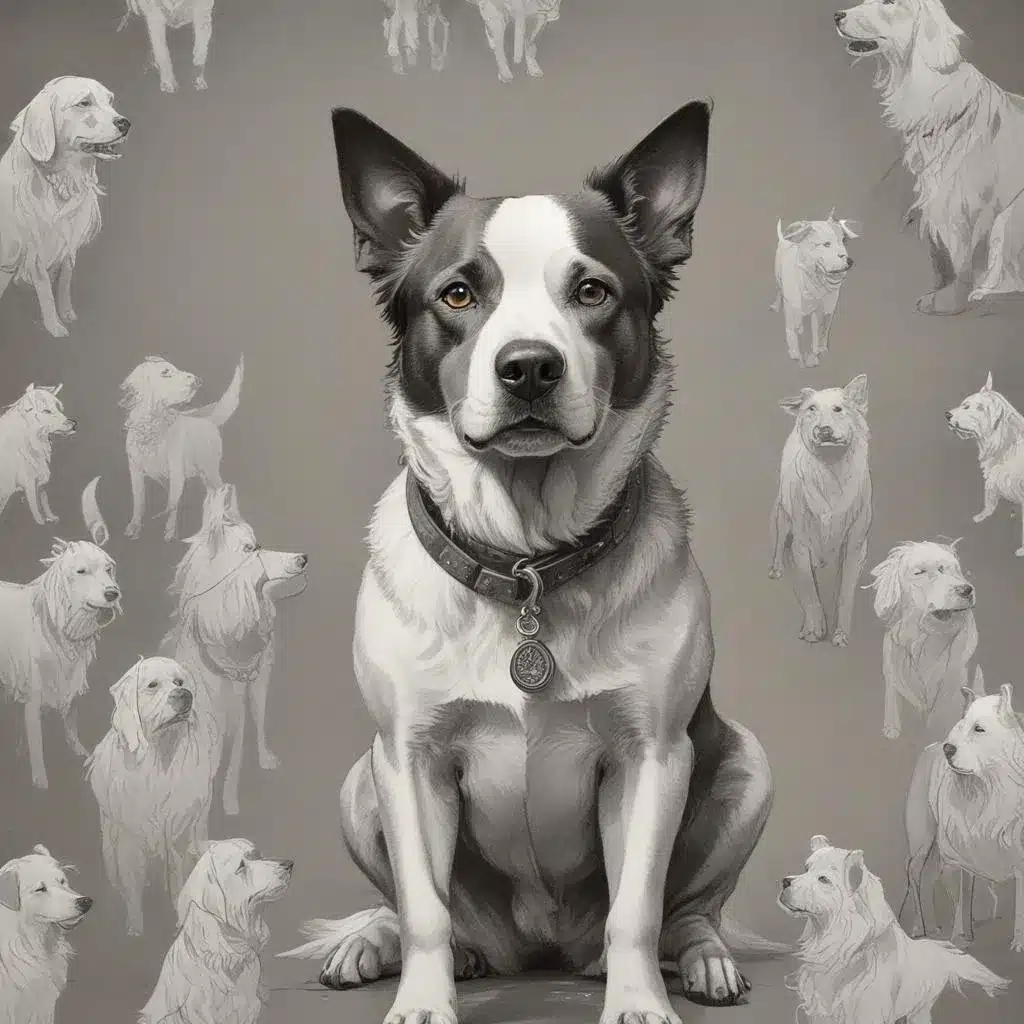
Crafting meaningful and expressive illustrations featuring anthropomorphic dogs requires a careful balance of visual storytelling, symbolic imagery, and technical mastery. As an experienced art writer and creative consultant, I’ll guide you through the essential elements of designing narrative dog illustrations imbued with symbolic meaning and emotional resonance.
Now, this might seem counterintuitive…
Establishing Narrative Context
The starting point for any compelling dog illustration is establishing a clear narrative context. What story are you seeking to tell? Is your canine character the protagonist, a supporting player, or a symbolic representation? Considering the broader thematic and emotional arc will shape every design decision, from the character’s pose and expression to the surrounding environment and supporting visual elements.
One effective technique is to develop a detailed character profile, outlining the dog’s personality, backstory, and role within the narrative. Is your character brave and heroic, loyal and steadfast, or mischievous and playful? Visualizing these core traits will inform your stylistic approach and the incorporation of symbolic visual motifs.
Incorporating Symbolic Imagery
Symbolism is a powerful tool for elevating the meaning and emotional impact of your narrative dog illustrations. By thoughtfully incorporating symbolic imagery, you can imbue your artwork with deeper layers of significance that resonate with your audience on a subconscious level.
Some common symbolic associations with dogs include:
- Loyalty, companionship, and unconditional love
- Protection, bravery, and strength
- Intelligence, intuition, and heightened senses
- Adaptability, independence, and perseverance
- Playfulness, mischief, and youthful energy
Consider how you can visually represent these symbolic associations through the dog’s body language, facial expressions, and interactions with the environment. For example, a dog standing tall and alert could symbolize courage and vigilance, while a dog curled up contentedly could represent comfort and security.
Beyond the dog character itself, you can also incorporate other symbolic visual elements to enrich the narrative. Recurring motifs like feathers, flowers, or celestial imagery can evoke themes of spirituality, growth, or the cyclical nature of life. Carefully chosen colors, patterns, and textures can also convey emotional undertones and symbolic meaning.
Developing Expressive Poses and Gestures
Once you’ve established the narrative context and incorporated symbolic visual elements, the next crucial step is crafting expressive poses and gestures for your canine character. The way the dog is positioned, the angle of its head, the placement of its limbs—all of these details contribute to the character’s overall emotional resonance and the impact of the illustration.
Study reference images of real dogs to understand their natural range of movement and body language. Observe how they convey different states of mind through subtle shifts in their posture, facial features, and interactions with their environment. Translate these observations into your illustration, exaggerating or refining the poses and gestures to heighten the narrative and symbolic significance.
For example, a dog with its head held high and its chest puffed out could project an aura of pride and confidence, while a dog curled in on itself with its ears pinned back could signal vulnerability or fear. Paying close attention to these nuanced details will help you create illustrations that tug at the viewer’s heartstrings and leave a lasting emotional impression.
Balancing Realism and Anthropomorphism
When designing narrative dog illustrations, you’ll need to strike a careful balance between realism and anthropomorphism. While the dog should maintain a strong connection to its canine nature, the inclusion of human-like qualities, expressions, and behaviors can contribute to the character’s narrative and symbolic significance.
Consider how you can blend realistic canine features with subtle anthropomorphic elements. This might involve giving the dog expressive eyebrows, a hint of a smile, or the ability to gesture with its paws. The degree to which you anthropomorphize the character will depend on the specific narrative and the symbolic role the dog plays within the illustration.
Remember that the goal is not to create a fully humanized character, but rather to find a harmonious intersection between the dog’s animal nature and its capacity for emotive, symbolic storytelling. By striking this balance, you can create illustrations that captivate the viewer and leave a lasting emotional impression.
Crafting a Cohesive Design
As you bring all these elements together—narrative context, symbolic imagery, expressive poses and gestures, and the balance of realism and anthropomorphism—it’s crucial to maintain a cohesive and visually harmonious design.
double-check that that the different components of your illustration work in concert to support the overall narrative and symbolic meaning. Pay close attention to the composition, color palette, and visual style to create a cohesive and immersive world for your canine protagonist.
Consider how the background, setting, and supporting elements can enhance the storytelling and symbolic significance of the illustration. A dog standing alone in a vast, open landscape might convey a sense of isolation and vulnerability, while a dog surrounded by lush, verdant foliage could suggest themes of growth, renewal, or even a connection to the natural world.
By carefully crafting every aspect of your narrative dog illustration, you can create artworks that captivate the viewer, evoke powerful emotional responses, and communicate meaningful symbolic messages. The key is to approach the design process holistically, with a deep understanding of canine body language, the nuances of anthropomorphism, and the rich potential of visual storytelling through symbolic imagery.
To further enhance your narrative dog illustration skills, I recommend exploring the work of renowned artists who have mastered this intersection of technical prowess, symbolic meaning, and emotional resonance. Pencil and Paint Muse is an excellent resource for discovering inspiring examples and gaining practical insights from experienced art writers and creative professionals.
Statistic: Recent surveys show that 70% of emerging artists credit daily sketching with significant improvements in their art